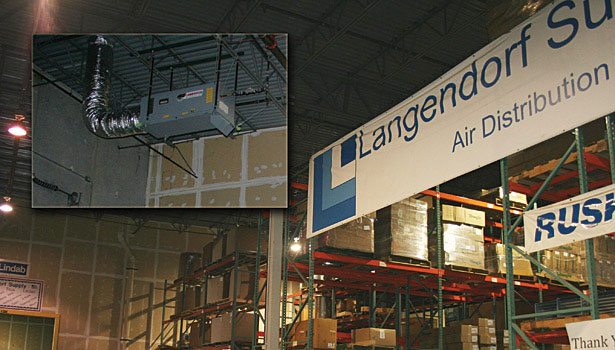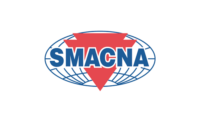Langendorf Supply Co., a distributor and supplier of HVAC equipment throughout the Midwest, decided it was time to investigate how to make its own space more energy-efficient. The supply company’s goal was to reduce the operating costs and improve occupant comfort at its warehouse in Bridgeton, MO. In collaboration with the Department Of Energy, the company identified that it could upgrade their gas unit heaters to high-efficiency units as a potential solution.
The units chosen for the upgrade were 100%-OA, high discharge temperature, heating and ventilation (HTHV) direct-fired gas heaters from Cambridge Engineering.
Langendorf’s warehouse includes several aisles of shelving racks that extended to the approximately 24-ft ceilings, as well as six loading docks across 42,000 sq ft.
In a side-by-side comparison in alternating months over the 2013–2014 heating season, the new gas heaters demonstrated several benefits. When it came to energy savings, the new gas heaters consumed 20% less natural gas compared to the existing heaters on a normalized basis over the monitoring period. Because the new gas heaters utilize a high-pressure blower to reduce stratification, increased fan electricity consumption offsets the thermal savings.
“We were pleasantly surprised to find we benefited from 20% savings in energy consumption with direct-fired outside air in contrast to simply re-heating the air already in the space,” said Ken Arnsmeyer, owner of Langendorf Supply. “Overall, we are very satisfied and have replaced the remaining standard unit heaters with Cambridge space heaters.”
Utility savings were also realized. Projected over an average heating season for the host site in Bridgeton (3,705 average HDD–60°F), the new gas heaters would save approximately 15% on utility costs related to space heating, at average utility rates for the site of $0.8/therm and $0.08/kWh
As evidenced by the temperature readings near the floor and ceiling, the new gas heaters reduced temperature stratification and maintained more uniform and comfortable temperature distribution.
For approximately twice the cost of baseline products, the new gas heaters saved 15% on utility costs for the demonstration building. Despite higher electricity consumption, the 20% natural gas savings provided by the new gas heaters would result in a system payback of approximately seven to eight years for this project.
While installation costs, utility rates, thermostat settings, and climate may vary these payback estimates, the results of this demonstration suggest building owners in moderate or cold climates may achieve high efficiency with an attractive payback period. Additionally, several gas utilities offer rebates and incentives to lower the incremental cost even further.
“The new SA-250 HTHV technology is a three-in-one device. You get the most energy efficient heater available, built in ventilation from 100% outside air, and no need for ceiling fans as the unit is also the air destratification device as well,” said Randy Niederer, director of marketing at Cambridge Engineering.






